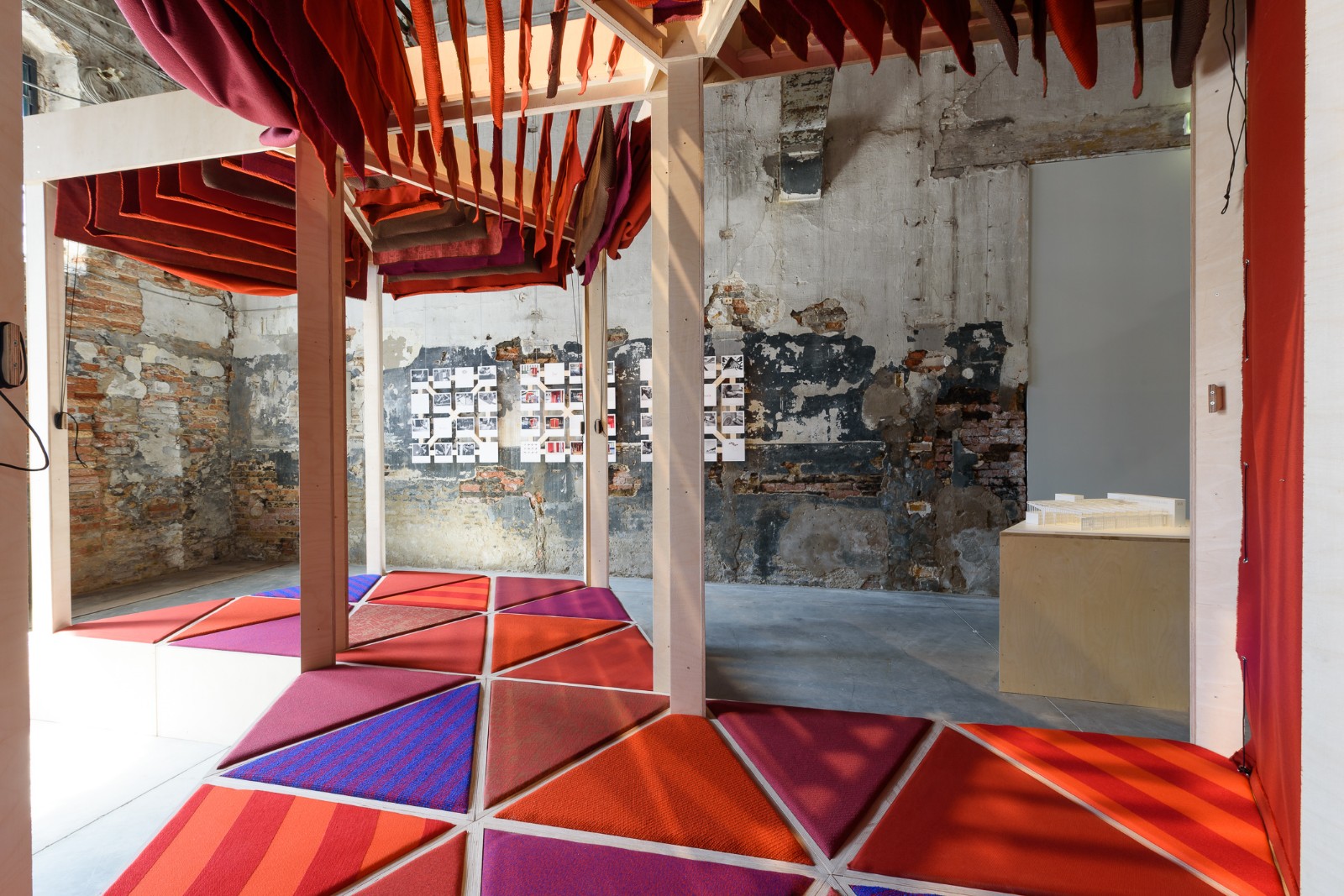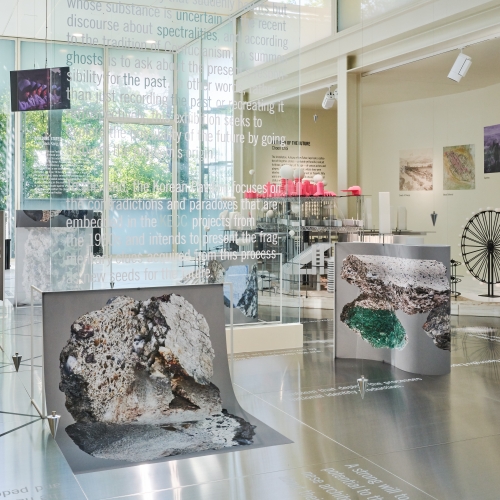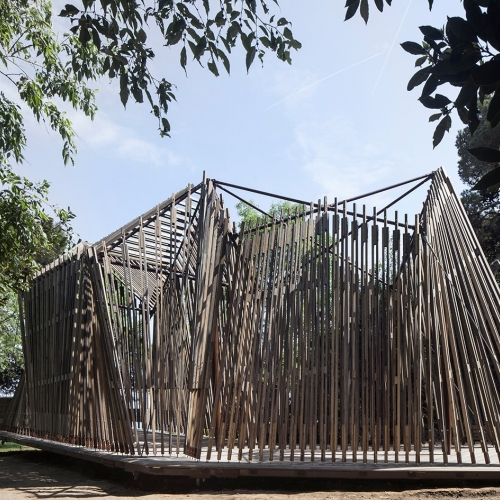‘Freespace describes a generosity of spirit and a sense of humanity at the core of architecture’s agenda, focusing on the quality of space itself’, writes Yvonne Farrell and Shelley McNamara, architects and curators of the 2018 Venice Biennale of Architecture, in their manifesto. It should not be surprising that the ideas of ‘generosity’ and ‘humanity’ anchor the otherwise loosely defined theme of this year’s exhibition: ‘freespace’. From the earliest considerations on generosity in the Western philosophical tradition, freedom and humanity were its natural counterparts. What is new in the inflection of these curators is the insertion of ‘space’, and of course architecture, into this conceptual trio. How might this customary triangulation of concepts apply to ‘the quality of space’ the curators inquire—and in a more contextualized sense, in the face of the intensifying ravages to the world’s spaces (natural, social, public, etc.) and spatial quality brought about by the heightened logics of capitalist society (accumulation, competition, profit maximization, exchange value over use value, etc.).
Generosity in the Western PhilosophicalTradition
As far back as the Nicomachean Ethics, Aristotle designated the virtues of ‘freedom’ and ‘magnanimity’ as subspecies of generosity.▼1 By the Renaissance, Descartes elevated generosity to the ‘key to all other virtues’, wherein virtue, grounded on the exercise of human freedom, reaches its full development in the moral ideal of generosity.▼2 To follow virtue, which is to act/live in a way that is consistent with one’s conscience, is the path towards happiness, but even beyond this goal, virtue has value in that it is grounded on the exercise of human freedom (free will).▼3 ‘True generosity’ begins as a (bodily) passion to become, qua virtue, a ‘habit’ of the soul, consisting of both a person’s knowledge of her freedom to dispose of her own volitions, and the firm resolution within herself to use this freedom well.▼4 In Descartes’ ethics, this full flowering of virtue, expressed in the moral ideal of generosity, becomes both an ideal of individual ethical perfection and a principle of moral universalism – both the striving for recognition of unconditional value within the self that is dependent on no one but the self, as well as the way this equips one to recognise the same intrinsic value in others, over and beyond distinctions of class and social status.▼5
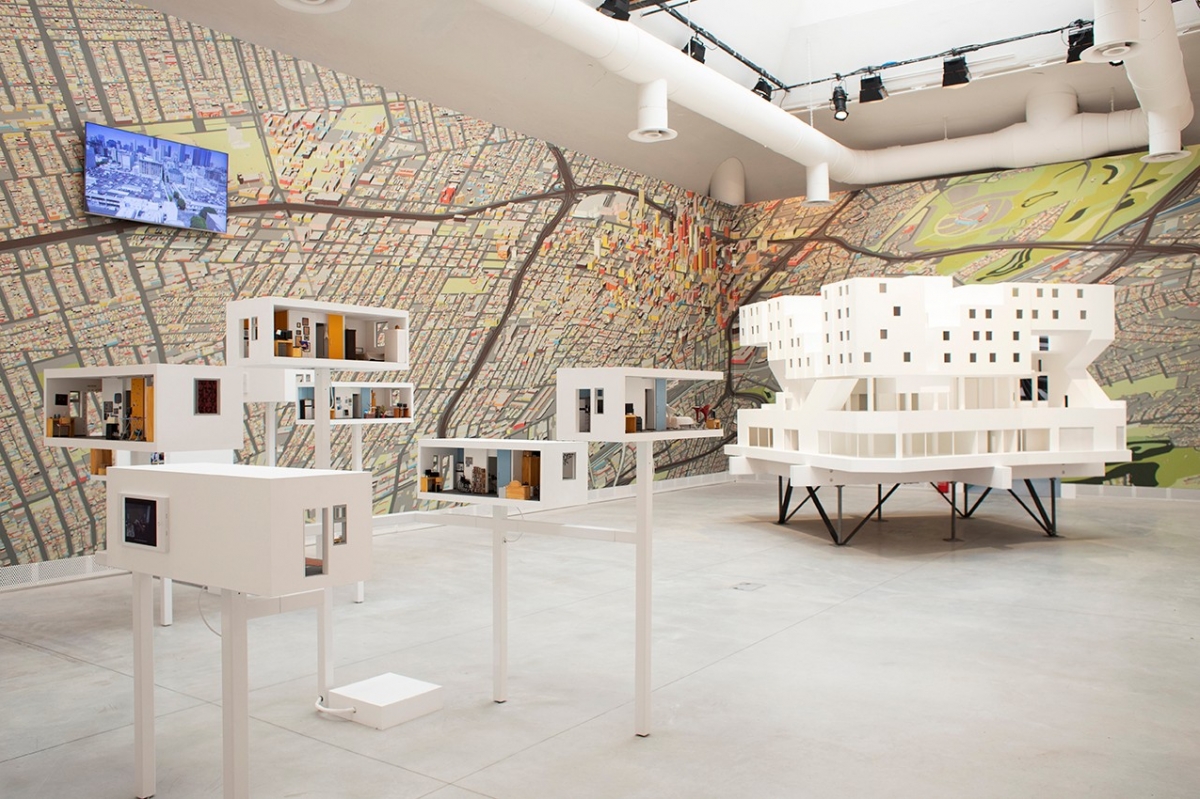
Michael Maltzan Architecture, Star Apartments, 2018 ©Italo Rondinella
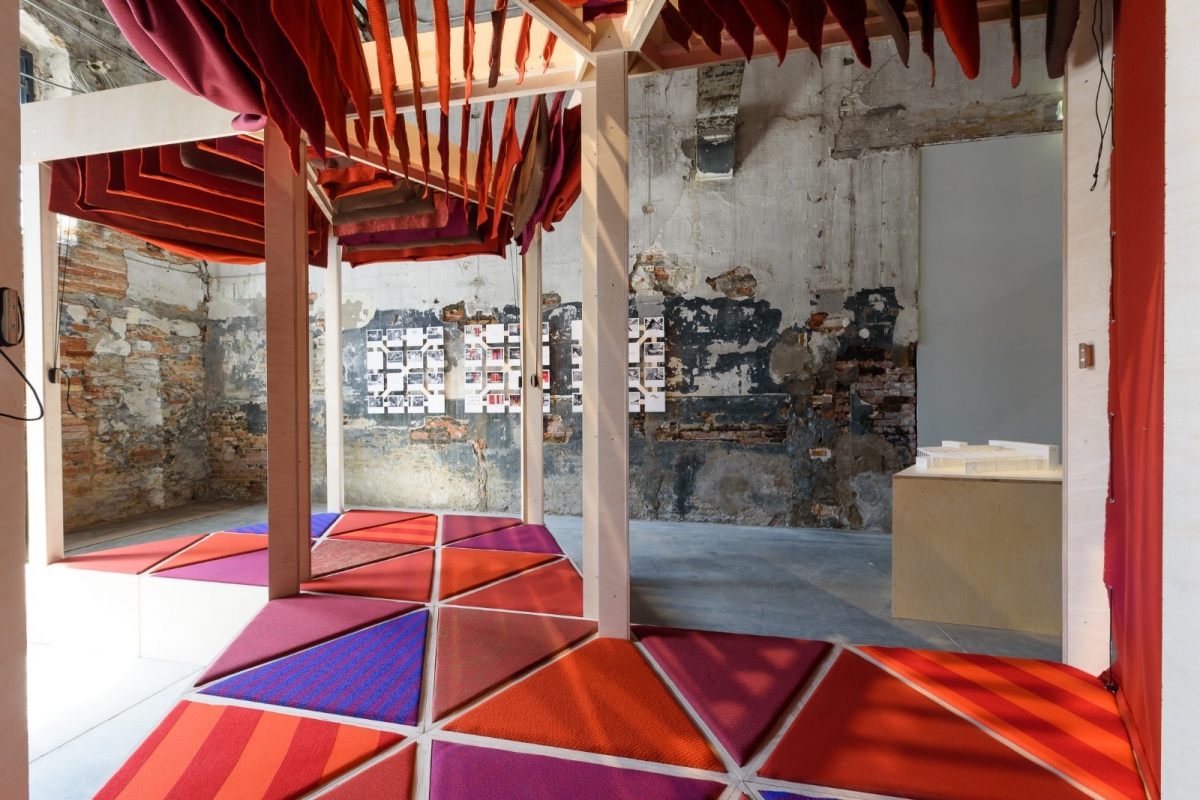
Kéré Architecture, Zoi, 2017 ©Andrea Avezzù
The Spirit of Generosity in ContemporaryArchitecture
If, as in the tradition of moral thought, the ideas of freedom, generosity, and humanity have generally combined to form ethical guidelines for individual virtue and moral principles to govern our relations with others, then how might such moral and ethical precepts translate into considerations of contemporary space and architecture? Is this not what the curators aspire to stimulate in their call for ‘freespace’, in their praise for architecture that invites and returns to ‘human activity’, ‘individual freedom’, and ‘human connections’, or in their reference to those exemplifying ‘freespace’ in architectural practice as a ‘warrior class’, a class primarily identified with a strict code of honor? We see this also in the distinction Farrell and McNamara make between ‘architects trading under the name of architects, but who are just builders, and not architects’, chastising and distinguishing the ‘developers’ among the architectural profession, while setting a higher bar for the profession as a whole.▼6 Thus at the same time, their use of ‘freespace’ recognises that we live in a world where both – the insistence to act in accordance with our convictions, or to focus our view towards our fellow humanity on what unites us as part of a shared humanity – have become imperiled amidst the assorted masks that obscure our vision of ourselves and others but which we have come to feel naked without, as much as the deepening artificial and real divisions and inequalities that are progressively enhanced, rather than diminished, by the quickening pace of globalisation. What, then, might it mean to approach space or make architecture from the standpoint of such a spirit of generosity – architecture that does not betray the conscience of the architect (or rather, the code or ethical ideal of an architect), nor that which does not betray or demean the intrinsic humanity of the people or community for whom she creates, in contemporary capitalist society?
Pavilions for Global Refugees and Art Tourism
Take for example, Zoi (from gr. Ζωή, life), a work exhibited by Diébédo Francis Kéré of Kéré Architecture, based in Berlin. Zoi is a small semi-enclosed wood and fabric pavilion accented by warm red earth tones and the compositional play of triangles, designed for an asylum seekers refugee centre located in one of the vast hangars of the former Templehoff airport in Berlin – and doubled in a twin structure displayed in the Artiglierie dell’ Arsenale of the Biennale. The simplicity and modesty of the structure is reflected in the main components of the work: ‘2 cities, 52 students, 2 pavilions, 6 modules, and [an infinite number of] configurations’. Zoi adds ‘improvisation and creativity’ to the standardised solutions, including spatial ones, of refugee camps in general, while bringing back a human scale and sensibility to the vast space of the airport hangar in Berlin. The project issues at least two significant insights or suggestions for an architecture of generosity: first, pavilions, no longer a building type we can merely associate with the natural landscape, may be better appropriated as a form of human shelter withinthe gargantuan halls of air terminals and art exhibitions of the largely inhuman scale pursued by globalised capital; and second (with a touch of moral universalism adapted for contemporary societies), such humanising interventions appear as necessary as adapted to the growing numbers of refugees produced by the dominant logics of contemporary capitalist society, as for the growing number of art/architecture tourists produced by the same society and logic.
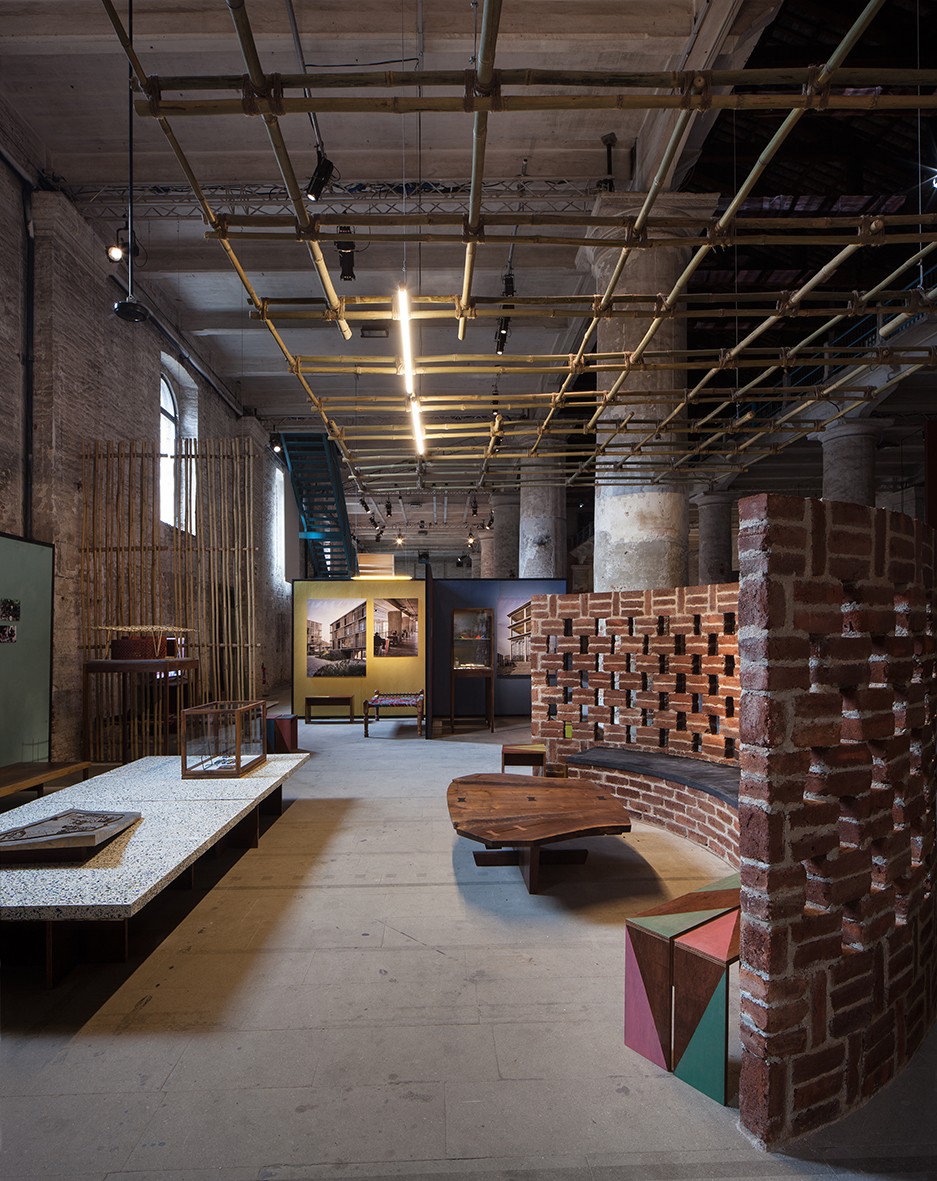
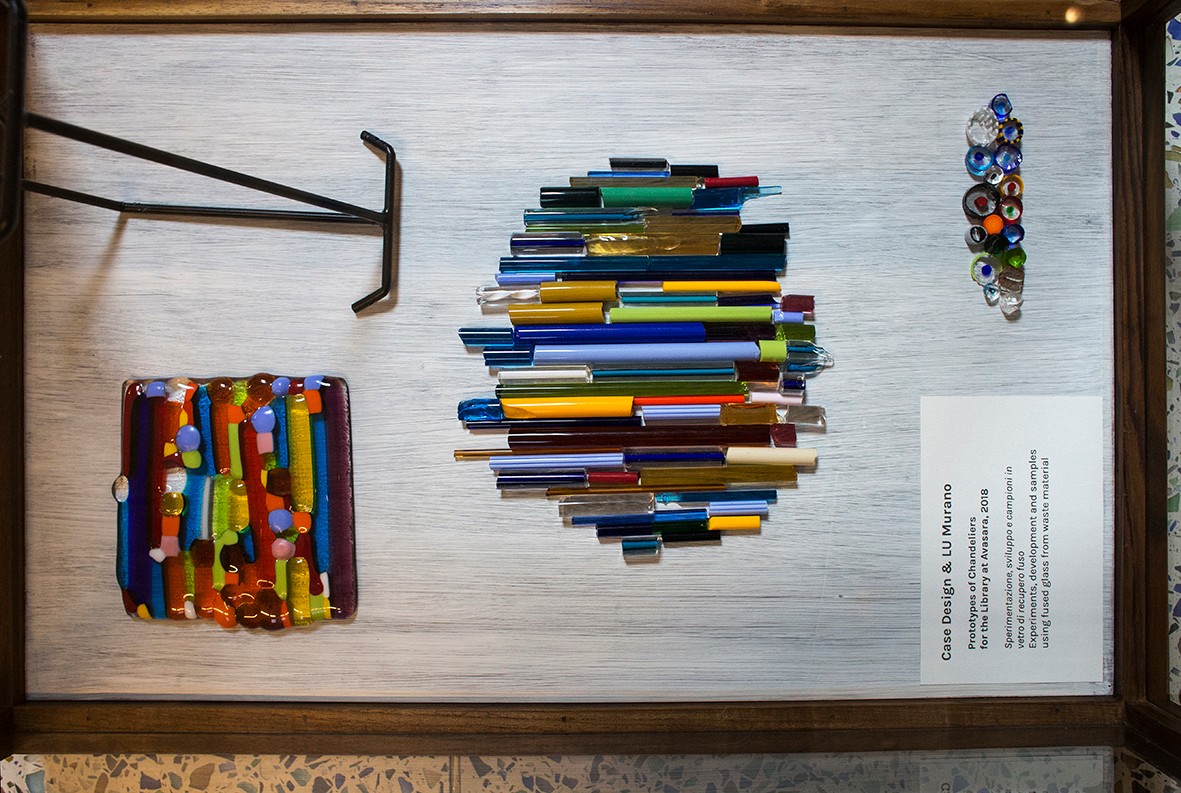
Case Design, a School in the Making, 2018 ©Francesco Galli
Vitality and Imagination
Effectively placed next to one another along the expansive Corderie of the Arsenale, two projects built in very different contexts, the Avasara Academy campus for girls by Case Design (India) and Fuji Kindergarten by Tezuka Architects (Japan), draw us towards the shared suggestion of the importance of the energy of youth, as much as to the imagination of adults for a generous ‘freespace’ architecture. The Avasara high school campus for girls is located on over four acres of rural land near Mumbai, India. The campus design combines both novel and simple engineering solutions to the humid conditions of the area, from cooling mechanisms in classrooms to the construction of water channels that use the landscape for permaculture systems. At the same time, there is a related craftsman-like approach to the inventiveness and exquisite detail of both the modern and dazzling aesthetics of the campus. Waste glass collected from the Murano factory floors has been transformed into brilliant chandeliers, colorful tiles laid in a rhythmic flow of mosaic tiling by local craftsmen, chairs woven into vivid patterns, and banisters and sunshades taking on simple geometric yet handsome modernist forms. As the girls learn about fragrance, colour, or form through these various processes, they also learn that ‘all the design elements do not come with a price tag but with thoughtfulness’, reinforcing an ethic of modesty and resourcefulness and the power of collaborative work to create something beyond one’s imagination.▼7
Built in the more crowded, urban setting of a Tokyo suburb, the Fuji Kindergarten presents an oval-shaped building which is on the one hand lacking in any visible boundaries between inside and outside, or between classrooms, integrating even the trees into the building itself, while on the other, the wide open space of the roof offers an unusual centrepiece to the building – a playground that offers a magical environment in which the children run free, elated by the expanse of sky, while the adult onlooker will experience a parallel liberation or lightness of mind. The light and sound installation of jubilant children gushing across the roof in the exhibition model further emphasizes the lack of barriers, including acoustic ones. While more limited by a set of urban and spatial constraints, setting it apart from the Indian rural academy project, the Fuji Kindergarten likewise opens up its constraints in a similar fashion, inviting newpossibilities by stretching the imagination, perhaps more vigorously than the former, to match the boundless vitality of children. Whether it is through the symbiosis of natural resources and human ingenuity, or the lack of these aspects in the largely urban context of suburban Tokyo, the simplicity of program, shape and use of space mean that the two projects serve to celebrate as well as highlight the specific and contextualized forms of imagination, freedom, and play.
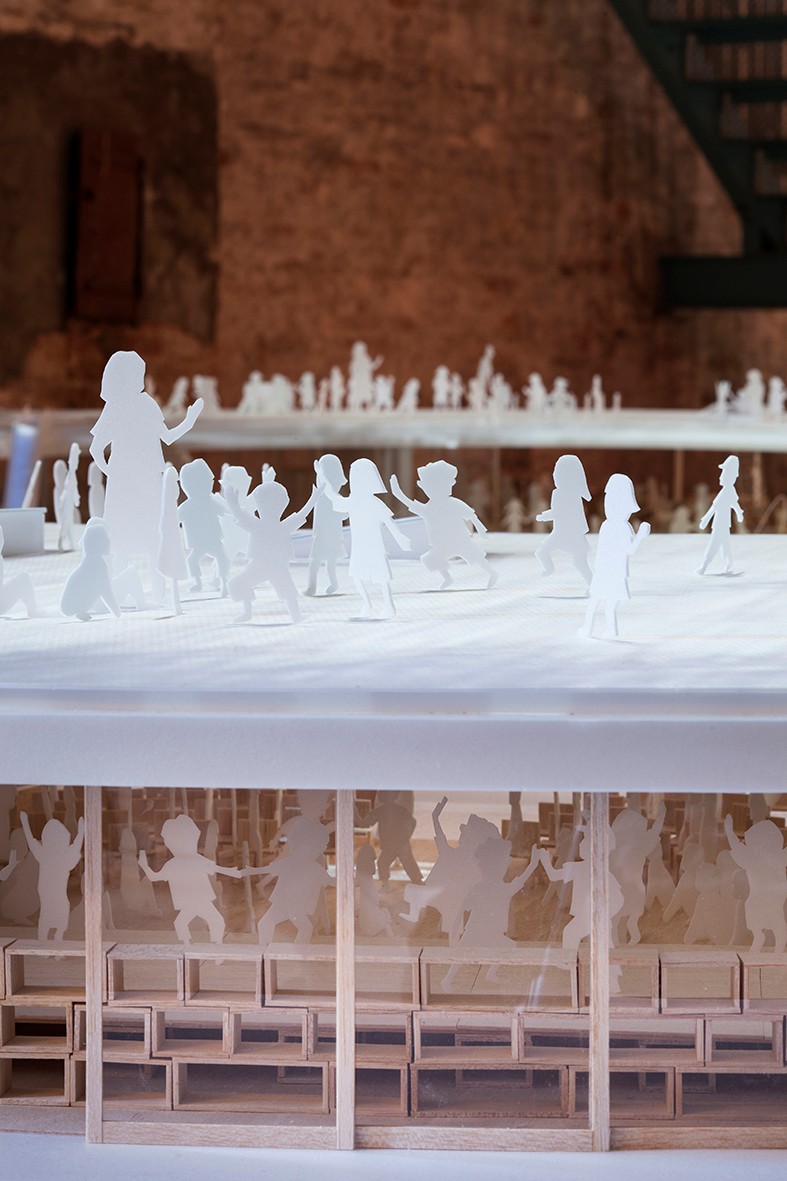
Tezuka Architects, Fuji Kindergarten, 2007 (Exhibition work: 2018)
‘Freespace’ as Social Housing
Insofar as ‘the generosity of spirit’ in ‘freespace’ entails a reassessment of the social vocation of architecture, social and public spaces comprise one repeating focus throughout the exhibition. Michael Maltzan’s (US) Star Apartments, realized in 2014, are a zigzagging stack of prefabricated modular units placed atop an existing single-story structure in downtown Los Angeles, housing 102 formerly homeless residents. Presented in the main hall of the Giardini, Maltzan carefully contextualizes social housing at multiple scales, from its location within the urban fabric of downtown L.A. to the individuality of the occupants that differentiate each of the otherwise identical modular units of the building. The exhibition asks the audience to recall, on the one hand, how social housing has been a formative part of the modernist architectural tradition, while on the other, to reassess the possibility of ‘neutralarmatures’, such as prefab units, in allowing for individual freedoms – as an instance of a certain generosity of the architect to take a step back, inviting in her place the individual to create the visual, material, and verbal narratives that shape the uniqueness of the space. Explored from these multiple registers, the project insists that social housing be reaffirmed as elemental to the task of contemporary architecture, while gesturing to new possibilities of generosity therein.
Generous Architecture for Contemporary Society
Lastly, I found myself particularly drawn to the simple, radiant, personality-filled, elegant, small homes and refurbished social housing projects of Anne Lacaton& Jean Philippe Vassal, dotting the Southwestern French countryside, presenting the quintessential ideal of a generous and human architecture. Incorporating many of the qualities examined in the above projects, their architectural programme to build simply and modestly, using creative economic solutions to devise a well-articulated and beautiful system – mass produced prefabricated walls, mullions and glass sheets extending interior spaces; plastic corrugated sheets forming translucent walls filling the interior with warm, diffused light; greenhouses turned into dining rooms – establishes a new baseline of value in architectural space and quality. Their attention to the relationship between architecture and its surrounding environment, their attitude of less is more, commitment to re-use/renovation, all oriented towards maximizing what is really important to the quality and use of space like ample sunlight, adequate space, pragmatic programmes like the ability to eat lunch on your balcony, financed on tight budgets and finished with dignified interiors and delightful exteriors – push back upon a society saturated in the norms of conspicuous consumption. At the same time, their elegant and spirited aesthetics evoke the poetic sensibility of Peter Zumthor’s enchanted models, as well as the whimsy of Salter Collingridge’s gadget-cum-furniture that celebrates the craft of construction. Their innovations in programme and design, responding to and challenging the oppressive forces that push down upon the production of space and architecture, announce the promising emergence of an avant-garde. Providing and improving shelter for the masses, humanized homes for the homeless (we itinerants, dispossessed, alienated…) of contemporary society…is generosity in architecture, supporting human growth and existence.
No doubt, there will be a variety of interpretations of the biennale theme; the openness of the theme lends itself to it. I, however, found this opening up to participating architects as much as to the exhibition audience and critics to take up the major work of imagining and thinking with the array of associations invoked by the concept of ‘freespace’ by the curators not only refreshing but also illustrative of the very generosity at the heart of their vision. Like other instances of magnanimous and collaborative undertakings, it also appears to be an effective method for drawing out a host of intriguing ideas and visually and viscerally joyful projects. I would only add, that it would serve us well to keep in mind that such a revival of a moral discourse of generosity appears both significant and welcome—as a companion to, but not in lieu of, a broader systemic critique.
-
1. Aristotle, Nicomachean Ethics, Book IV (Cambridge, 1934); Lester H. Hunt, ‘Generosity’, American Philosophical Quarterly 12.3 (July 1975), p. 235.
2. Rene Descartes, The Passions of the Soul, translated by Stephen H. Voss (Indianapolis: Hackett Publishing Company, 1989), Part 1, Ch. 22; Donald Rutherford, ‘Descartes’ Ethics’, The Stanford Encyclopedia of Philosophy (Fall 2017 Edition), Edward N. Zalta (ed.), web
3. Rutherford.
4. Descartes, quoted in Rutherford.
5. Rutherford.
6. All quotations taken from the curators’ roundtable discussion on 26 May 2018, Piccolo Theater, Arsenale, Venice.
7. Video by Case Design displayed as part of the exhibition, Corderie, Arsenale.





